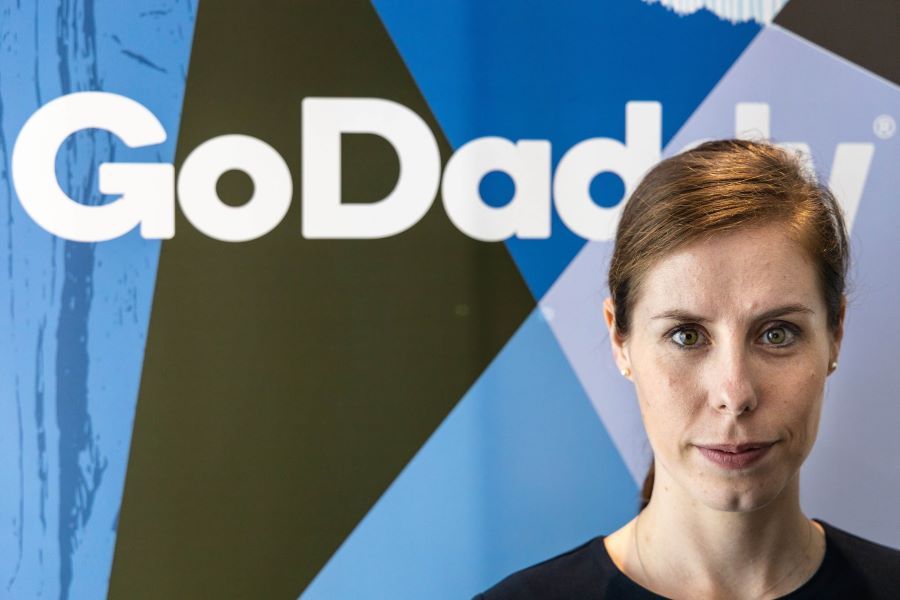Why we need website builders in Arabic

Selina Bieber is the senior regional director for Mena and Turkey at GoDaddy
Although digital transformation has been a crucial goal for global industries over the past decade, applications of digital technology have grown exponentially in necessity and popularity due to the current Covid-19 pandemic. More than ever, people across the globe are relying on the internet to complete daily tasks regardless of their geography, age or gender.
When considering the adoption of the internet and digital technologies, we can liken it to Rogers, E. M. (1962). ‘Diffusion of innovations’ theory regarding new product development. Tech-savvy people including web designers, developers, and engineers, and millennials constitute the majority of early adopters, yet today people of all ages and working in a variety of sectors falls into the new majority having to learn the technologies and tech skills to utilise these new tools and platforms.
In this regard, there is an opportunity for catch-up in the region when we look at the number of Arabic speaking users online versus the number of Arabic businesses online. By bridging this gap through the launch of localised language tools, more local businesses can tap into the existing potential online.
However, the challenge of supporting an Arabic website builder is two-fold. First, there is a layer of complexity when it comes to the convergence of technology, particularly developer languages and spoken languages. At conception, the programming world needed a language standard in order to communicate and develop 'code'. This default language is English. While this is convenient for most, it also means the majority of programs, solutions, and tools have been developed in English using the Latin alphabet. This has made the enablement of a right-to-left language website a challenge from both a development and content perspective.
Secondly, from a content standpoint, English had a first-mover advantage as the internet was created by those speaking the language. As early adopters in these markets spoke English, content in the same language was produced across the world wide web. Fast forward to 2020 and Arabic is the fourth most spoken language online, highlighting the need to better cater content and websites in local Arabic language for this growing audience.
Against this backdrop, offering an Arabic website builder tool and our e-store tool is important across a few different user benefits. By making online tools available in the native language of internet users, we remove a linguistic language barrier which simultaneously provides Arabic business owners with access to the solution needed to overcome the barrier of limited languages available in technology development. For customers, they may feel more comfortable doing business with a company with a website in their native Arabic language.
Having the ability to build and publish a website in Arabic, as well as selling products and services in Arabic, both enables local businesses to get online, and allows them conduct business and engage with their customers in their native language, end to end. Looking at the share of content online, having more sites published in Arabic means there will be more information and advice available in the region’s native language. As well as the availability of a breadth of services and products that may not have been available previously in a customer’s local area.
At GoDaddy, we seek to empower entrepreneurs and small businesses across the world by guiding them in their journey online and recognise that the ability to unlock the potential/benefits of digital often requires some support, advice, and guidance. With the Arabic website builder, it is easier for businesses to get online. In addition to utilising the localised content and support available, but also, giving customers the knowledge, they need to plan, build, market, and grow their online presence in Arabic language.
As we get more Arabic speaking users online, we also gather quantitative and qualitative data that allows us to gain insights on the unique habits, needs, and behaviour of the Arabic speaking users. All this serves to create a more inclusive internet and range of online tools across the entire world.
Tim Berners-Lee, inventor of the World Wide Web, once said: “The Web does not just connect machines, it connects people.”
As people across the region connect online, a factor that the current global situation has been a catalyst for, the potential for economic growths develops. With accessibility increasing, more examples and inspirational stories are presented with the hopes of more businesses following suit. Conversely, as more businesses and entrepreneurs find the confidence to dip their toes in the water, they can assess the value of how an online presence , can help their business grow.
Finally, as we look to the future of digital transformation, we need to consider how much has changed in this landscape. In the early 2000s, websites were seen as an online extension to corporate brand identity, but today, a website is a mutually dependent component of a broader online presence and digital marketing strategy.
I am a firm believer that through ongoing optimisations in technological personalisation, quality advertising and content, consumers will be matched with businesses they find relevant, contributing to overall economic growth, and efficiency.


